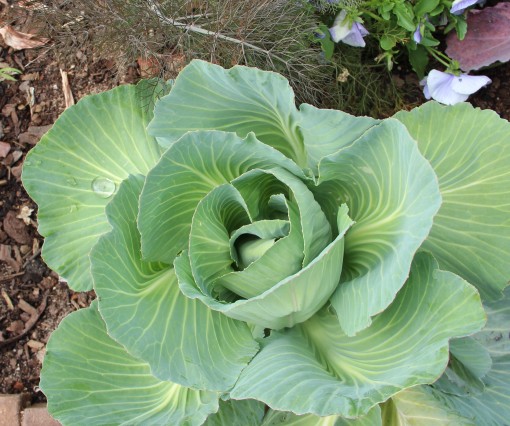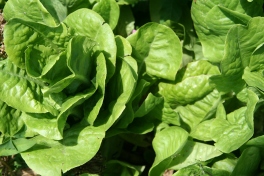
By Teresa Woodard
Yes, I’ve planted flowering kale to add fall color to borders and containers, but I had no idea how amazing brassicas — kales, cabbages, turnips, kohlrabi and mustards — could look in the landscape until last week when I visited the spring display gardens at the Riverbanks Zoo & Botanical Garden in Columbia, SC. Brassicas are best grown in cool seasons – spring and fall, so consider purchasing some plants to add this spring or planting some seeds in August for a fall show. Fellow blogger Deb Knapke will follow up this post with another on growing tips.
The Riverbanks’ spring display garden offers plenty of inspiration. Just check out these fanciful and edible leaves and clever planting combinations.

Ornamental Kale: Brassica oleracea (Acephala Group) ‘Peacock Red’

Curly Kale: Brassica oleracea (Acephala Group) ‘Starbor’

Kohlrabi: Brassica oleracea (Gongylodes Group) ‘Azur-Star’

Cabbage: Brassica oleracea ‘OS Cross’

Kohlrabi: Brassica oleracea (Gongylodes Group) ‘Delicacy Purple’

White ornamental kale: Try the Crane series for cut flower arrangements.

Upper right corner is Siberian Kale or Brassica napus (Pabularia Group) ‘Winter Red’
Giant Red Mustard produces a contrasting yellow flower.

Cool season flowering plants like pansies and violas make great companion plants for brassicas.

Kohlrabi paired with violas

Collards take on more beauty as they flower here in yellow blooms.

An planting of curly kale beneath a Chinese fringe tree

Visit Riverbanks Zoo & Botanical Gardens’ spring display in its 34,000-square-foot walled garden area.

Radicchio Cichorium Intybus ‘Fiero’ (Not a brassica but a beautiful edible.)

Radicchio add eye-catching conical shapes in the spring display garden.

A 300-foot-long canal featuring cascades and pinwheel fountains serves as the focal point of the impressive spring display in the walled garden at Riverbanks Zoo & Botanical Garden.
















